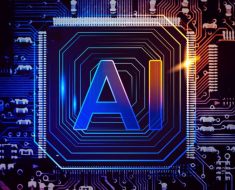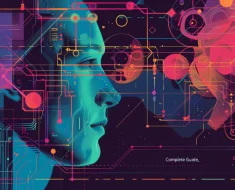
The quest for artificial general intelligence (AGI) has long captivated the human imagination. The idea of machines that can think, learn, and reason like humans—or even surpass us—has been a staple of science fiction for generations. But how close are we to realizing this vision? And what challenges remain in our path?
To shed light on these questions, we turned to one of the foremost experts in the field: Professor Melanie Mitchell. With a distinguished career spanning academia and industry, Mitchell has been at the forefront of AI research for over three decades. Her pioneering work on analogical reasoning, complex systems, and abstraction has helped shape our understanding of both artificial and natural intelligence.
In a wide-ranging interview on the DataHack Radio podcast, Mitchell offered her insights on the current state of AI, the hurdles to achieving AGI, and the future trajectory of the field. Let‘s dive into some of the key takeaways from this fascinating discussion.
The Rise of Deep Learning
In recent years, the AI field has been dominated by the rapid ascent of deep learning. Powered by neural networks with many layers (hence “deep”), these systems have achieved remarkable feats in domains like computer vision, speech recognition, and natural language processing.
As Mitchell notes, the core ideas behind deep learning have been around for decades. Convolutional neural networks, a mainstay of modern computer vision, were first developed in the 1980s by researchers like Yann LeCun and Kunihiko Fukushima [1]. However, it took the confluence of algorithmic advances, more powerful hardware, and vast datasets to unleash their full potential.
The impact has been nothing short of transformative. Deep learning systems now rival or exceed human performance on a range of perceptual tasks, from recognizing objects in images to transcribing speech [2]. They power everything from smart speakers to self-driving cars to medical diagnostics.
Yet for all their impressive achievements, these systems remain fundamentally narrow in scope. They excel at the specific tasks they‘re trained on, but struggle to generalize that knowledge to new domains. A neural network that masters the game of Go can‘t transfer that strategic prowess to chess or poker.
As Mitchell puts it, “People underestimate how complex intelligence is.” While deep learning has made great strides in pattern recognition, it falls short of capturing the fluid, context-dependent nature of human reasoning.
The Enduring Challenges of AGI
So what separates narrow AI like deep learning from true general intelligence? It‘s a question that has long preoccupied Mitchell and other researchers in the field.
Part of the answer lies in the multifaceted nature of human cognition. Our minds seamlessly integrate a wide range of abilities, from perception and memory to language and abstraction. We effortlessly draw on knowledge gained in one context and apply it to new situations. We form rich mental models of the world that allow us to reason, plan, and imagine.
Replicating this kind of flexible, open-ended intelligence in machines has proven enormously challenging. As Mitchell writes in her forthcoming book, Artificial Intelligence: A Guide for Thinking Humans, “The barrier between narrow AI and general AI is the barrier of meaning” [3].
Consider the domain of autonomous driving. While self-driving cars have made significant strides in recent years, they still struggle with the full complexity of real-world environments. A human driver can easily distinguish between a harmless paper bag blowing across the road and a dangerous obstacle like a large rock. For a self-driving car, making that distinction is a formidable challenge.
Why? Because humans understand the world at a deeper, more abstract level. We grasp the essential properties of objects and the causal relationships between them. We draw on common sense knowledge to interpret ambiguous situations. We use analogies to reason about novel domains.
Endowing machines with this kind of rich, flexible understanding remains an elusive goal. While deep learning excels at recognizing patterns in raw data, it struggles to capture the higher-level concepts and abstractions that underlie human intelligence.
Paths Forward
So how do we bridge this gap between narrow AI and AGI? Mitchell sees several promising avenues for progress.
One is unsupervised learning. Unlike supervised learning, which requires laboriously labeled training data, unsupervised techniques aim to discover patterns and structures in raw, unlabeled data. By learning useful representations from the vast amounts of unstructured data in the world, these approaches could help AI systems acquire the kind of broad, general knowledge that humans possess.
Recent advances in unsupervised learning, like Generative Adversarial Networks (GANs) [4] and self-supervised learning [5], have shown the potential of this paradigm. However, we‘re still in the early stages of understanding how to integrate this kind of open-ended learning into AI systems.
Another promising direction is hybrid AI approaches that combine the strengths of different techniques. For example, neuro-symbolic systems aim to unite the pattern recognition capabilities of neural networks with the reasoning and abstraction power of symbolic AI [6]. By grounding symbols in real-world data, these approaches could help bridge the gap between low-level perception and high-level cognition.
Ultimately, achieving AGI may require a more fundamental rethinking of our approaches to AI. As Mitchell has argued, we may need to move beyond the narrow, task-specific frameworks that dominate the field today and embrace a more holistic, cognitive view of intelligence [7].
This could involve drawing insights from fields like cognitive science, developmental psychology, and neuroscience to build AI systems that more closely mimic the structure and function of the human mind. It may require developing new architectures and training paradigms that can support the kind of flexible, open-ended learning and reasoning that characterizes human intelligence.
Risks and Implications
As we continue to push the boundaries of AI capabilities, it‘s crucial that we grapple with the profound implications of this technology. The advent of AGI would be a watershed moment in human history, with the potential to transform every aspect of society.
On one hand, AGI could help solve many of the world‘s greatest challenges, from curing diseases and mitigating climate change to expanding our knowledge of the universe. But it also poses significant risks and challenges.
How can we ensure that AGI systems are safe, robust, and aligned with human values? What ethical principles should guide their development and deployment? How can we mitigate potential negative impacts on the economy, privacy, and security? And how can we foster public understanding and engagement around these complex issues?
Addressing these questions will require a concerted effort from researchers, policymakers, and society at large. As Mitchell emphasizes in her upcoming book, it‘s crucial that we approach the development of AI with thoughtfulness, transparency, and a commitment to the greater good.
Conclusion
The path to artificial general intelligence is long and uncertain, but the progress in recent years gives cause for both excitement and caution. While narrow AI systems like deep learning have achieved remarkable feats, they still fall short of the flexibility and generality of human cognition.
Bridging this gap will require not just more powerful algorithms and hardware, but a deeper understanding of the nature of intelligence itself. As Melanie Mitchell‘s research and insights make clear, this is a multifaceted challenge that spans fields from computer science and cognitive psychology to philosophy and neuroscience.
Yet the potential payoffs are immense. AGI could help solve many of humanity‘s greatest challenges and unlock new frontiers of knowledge and discovery. As we continue to push the boundaries of what‘s possible with AI, it‘s up to us to grapple with the profound implications of this technology—and to steer it towards beneficial ends.
It‘s a daunting task, but one that we must embrace if we hope to create a future in which humans and machines can coexist and thrive. With the dedication and wisdom of researchers like Melanie Mitchell to light the way, that future feels more attainable than ever.





